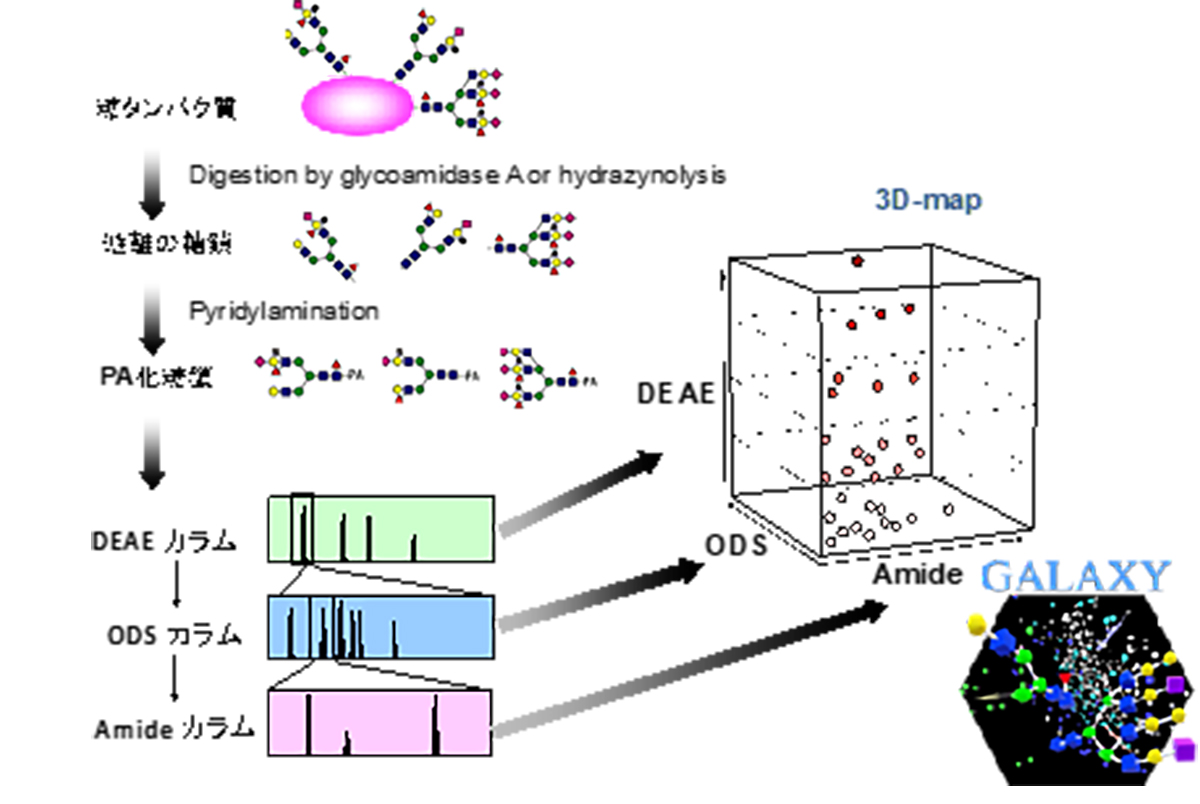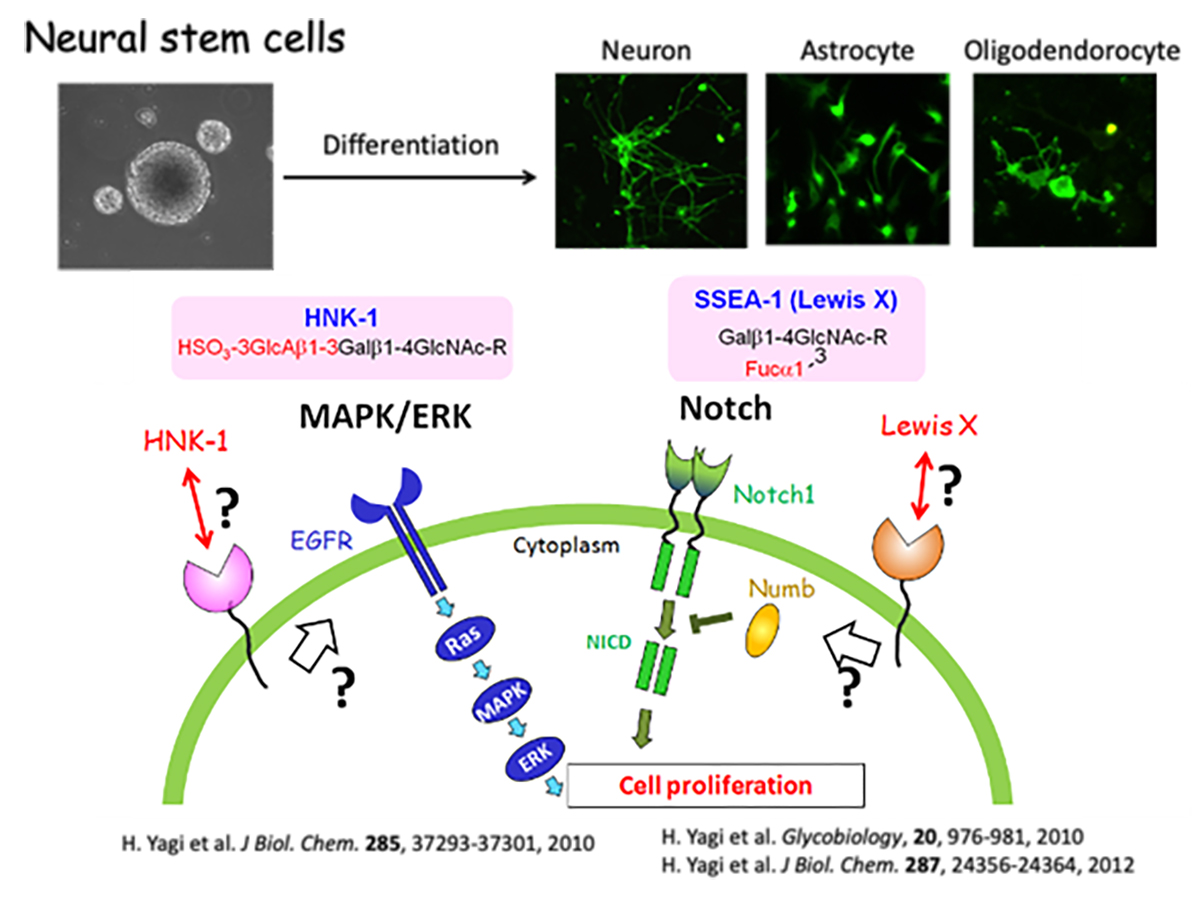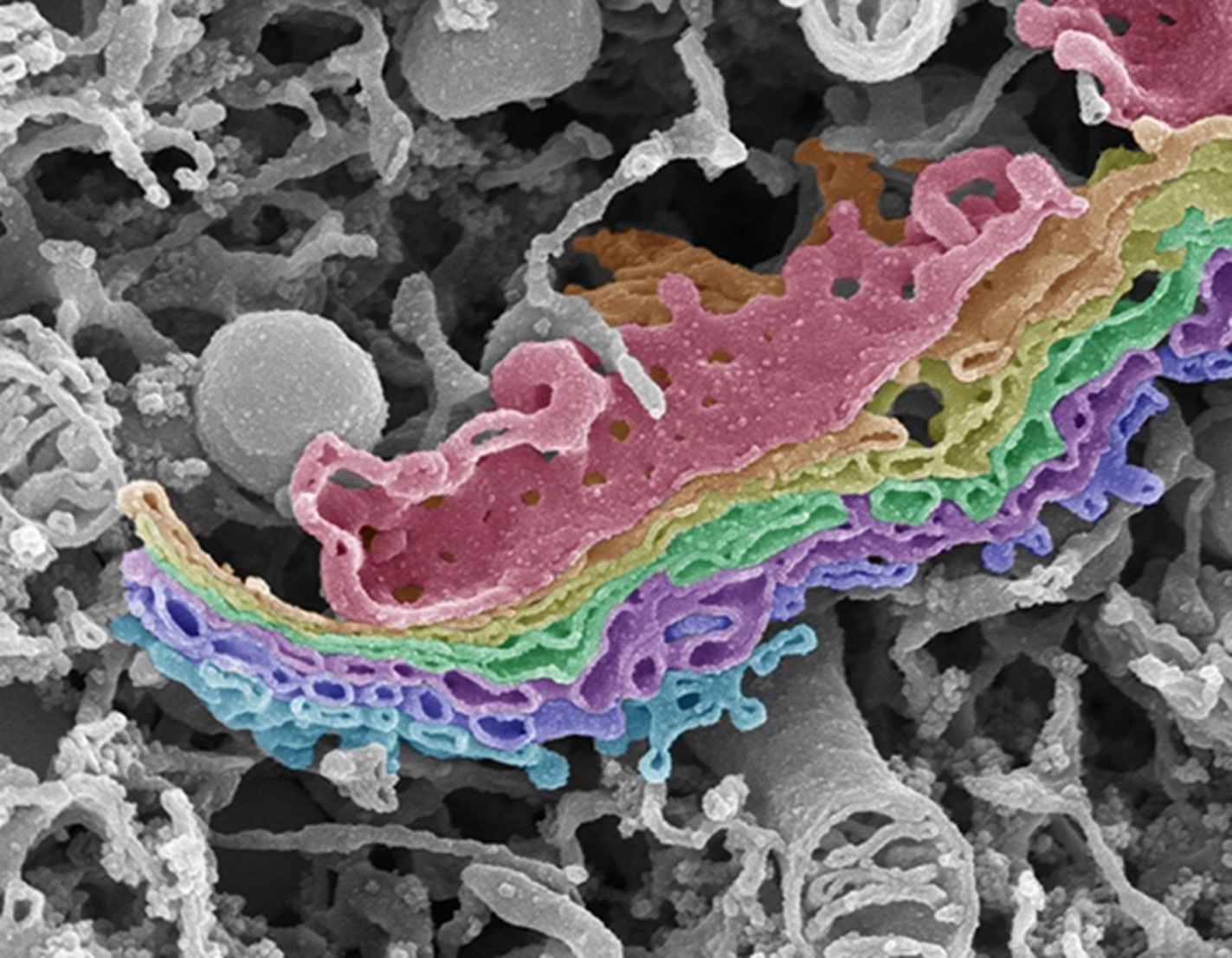Research
Living organisms are complex systems composed of a variety of biological substances such as nucleic acids, proteins, lipids, and glycans, which work together to perform various biological functions. Our laboratory employs an omics approach that focuses on the glycome and proteome to understand the network of molecular information that constitutes biological systems. We aim to decipher the functions of biomolecules constituting such networks, from the molecular to the cellular and in vivo levels, in a multilevel biofunctional analysis that employs techniques from structural biology, biochemistry, and cell biology.
1. Understanding living system through structural analysis of glycans
Glycans are not directly encoded in the genome, making it challenging to predict their structures or control their expression. We aim to decode the life information carried by glycans by developing glycan structure analysis methods and employing approaches based on molecular structures. For example, we focus on examining the role of glycans in organisms and viruses that exist in extreme environments, such as giant viruses with genome sizes similar to eukaryotes, microorganisms in deep-sea environments, and tardigrades with desiccation tolerance. This examination is based on investigating the structure of glycans.

Figure: Unique glycomics analysis method
2. Functional analysis of glycans within the biological system
Glycans cover the surface of cells and mediate various life phenomena, including viral infection, cancer invasion and metastasis, as well as cell recognition and communication. Glycans play a role in various life phenomena and have attracted attention in the fields of medicine and pharmacy. Therefore, glycans are not only marker molecules but also actively involved in controlling life processes. In this research laboratory, we aim to elucidate the roles of glycans at the molecular level, cellular level, and individual level, focusing on phenomena such as carcinogenesis, differentiation, and aging. We also integrate various omics approaches, including glycomics and proteomics, to deepen the understanding of the entire biological system as an information network spanning multiple omics levels.

Figure: It reveals that specific glycans are expressed in neural stem cells and actively contribute to stemness maintenance.
3. Understanding the glycan modification system in the secretory pathway
Proteins are glycosylated in the endoplasmic reticulum, and various glycans are formed in the Golgi apparatus. The structure of glycans is formed by a series of membrane protein groups called glycosyltransferases, which sequentially bind sugars. In our recent research, we have discovered that glycosyltransferases not only localize to the well-known Golgi cisternae structures such as cis, medial, and trans but also exist in more localized regions within the same cisterna. Furthermore, by utilizing electron microscopy techniques, we have found that the Golgi apparatus, which was previously thought to be simply stacked cisternae, actually has a complex interconnected spatial arrangement. For example, the cis-Golgi cisternae are positioned outside the trans-Golgi cisternae, which was not previously assumed. Based on these findings, we aim to elucidate how glycans are synthesized within the complex Golgi apparatus and understand the mechanisms involved.

Figure: Electron microscopy image of the Golgi apparatus (provided by Dr. Koga, Asahikawa Medical University)

